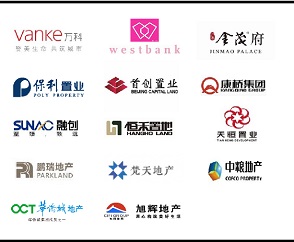MVRDV的水晶屋迎来了新租客爱马仕(Hermès),以一个更加透明的立面重新开业
位于阿姆斯特丹的水晶屋,是MVRDV设计的一个高端零售商店,2016年开业之初就获得了广泛的国际赞誉,如今新租户已入驻并重新开业,开放的立面效果实现了最初的设计构想。该项目具有宝石般的外观,设计初衷是让阿姆斯特丹不仅拥有特色鲜明的高端旗舰店,同时又不失城市的历史特色。水晶屋位于阿姆斯特丹精品购物街道PC Hooftstraat,最初为香奈儿临时的零售店。经过翻新,新租户法国奢侈品牌爱马仕已经开业。
Crystal Houses, the Amsterdam store designed by MVRDV that received international acclaim upon its opening in 2016, has re-opened with a new tenant and a facade which is finally as open as originally intended. The project’s jewel-like façade was proposed as a way for Amsterdam to be home to distinctive, upmarket flagship stores without compromising the city’s historical character. Located on the high-end shopping street PC Hooftstraat, Crystal Houses initially hosted a temporary store for Chanel, but it has now been renovated and re-opened for French luxury brand Hermès.
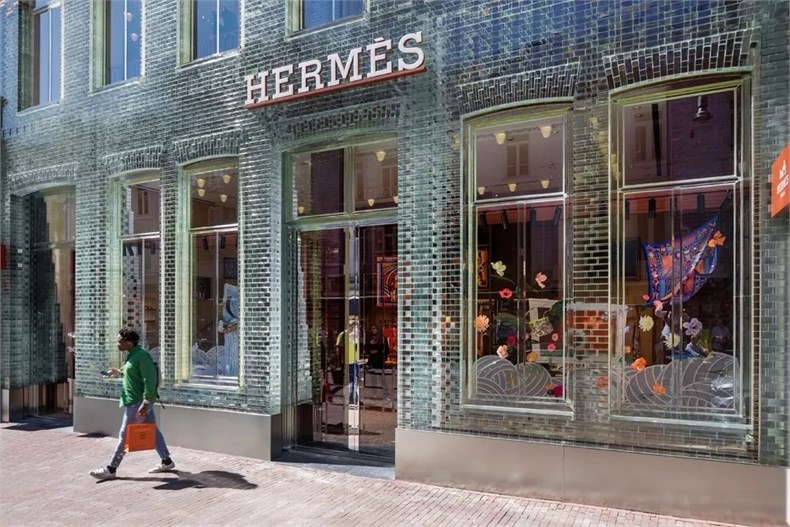
图/Image: Daria Scagliola & Stijn Brakkee
MVRDV设计的水晶屋于2016年开业,现作为爱马仕专卖店重新开业
Originally opened in 2016, MVRDV's Crystal Houses is now reopened as a Hermès store
水晶屋业主是总部位于阿姆斯特丹、专注于零售地产的Warenar公司,它设想对PC Hooftstraat大街上的传统建筑进行再创造以产生戏剧性的对比:常见的赤陶砖立面被玻璃砖复制品所取代,玻璃砖则逐渐融入建筑上部的传统赤陶砖中。
Created for Amsterdam-based retail real-estate company Warenar, Crystal Houses was envisioned as a recreation of the traditional houses that make up PC Hooftstraat, with a dramatic twist: the usual brick façade is replaced by a glass replica, which dissolves into the traditional terracotta bricks on the upper level.
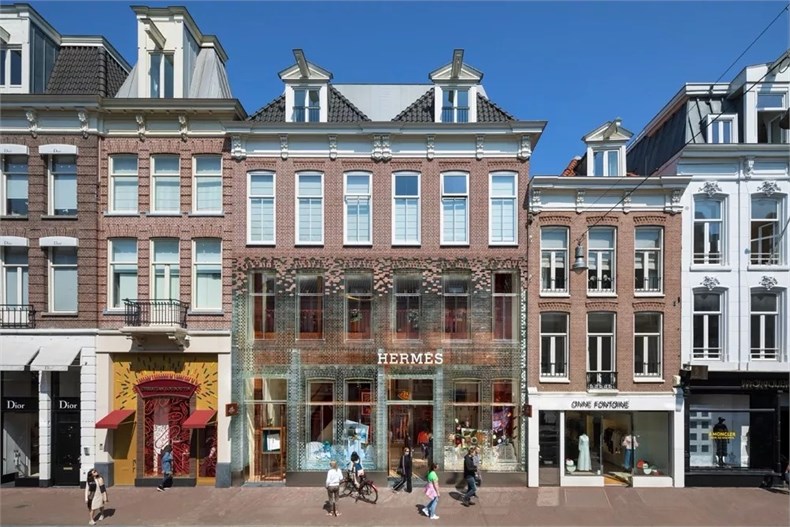

图/Image: Daria Scagliola & Stijn Brakkee
通过打开一楼的空间,水晶屋的玻璃立面变得更加透明
By opening up the first floor, the glass façade of Crystal Houses has become even more transparent
玻璃制造商Poesia和工业粘合剂厂商Delo提供了材料,代尔夫特理工大学、engineers ABT和承建商Wessels Zeist通过一段时间的合作和深入研究实现了设计构想。微妙而复杂的立面将传统的赤陶砖和透明的玻璃砖结合起来,以此获得了梦幻的效果。
The effect required a period of intense research undertaken with the collaboration of TU Delft, engineers ABT, and contractor Wessels Zeist, and with materials provided by glass manufacturer Poesia and Delo Industrial Adhesives. The outcome was a dreamlike shopfront which combines the intricate complexity of traditional brick construction with the transparency of a retail façade.
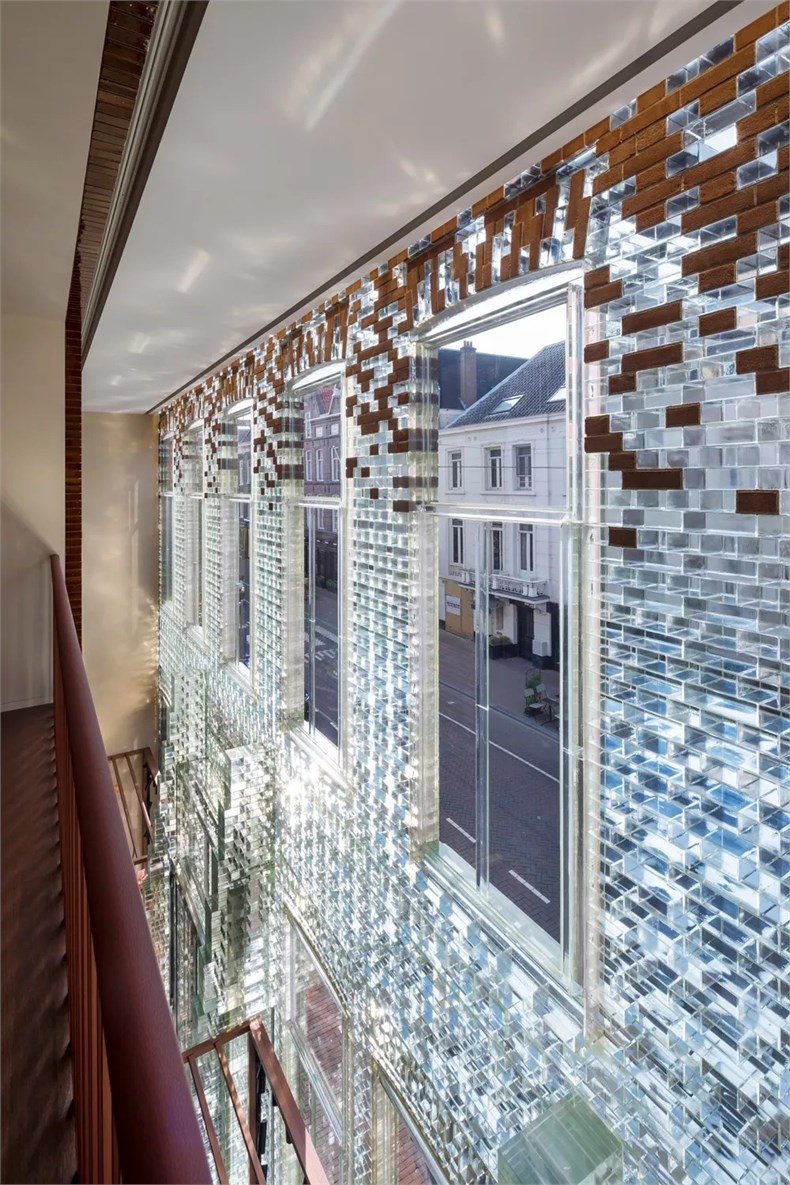

图/Image: Daria Scagliola & Stijn Brakkee
首次向游客分享了玻璃砖块溶解于传统赤陶砖直至消失的视觉体验
Visitors are now able to see the dissolving effect where the glass bricks meet terracotta bricks close up
最初,根据香奈儿的需求,在一楼玻璃立面上方的内部额外增加了一堵不透明的墙,因此透明度在一定程度上被削弱。新租户爱马仕聘请的室内设计事务所Bureau de Binnenstad拆除了这堵墙,并将开放的效果从室内延伸至室外,首次向游客分享了玻璃砖块溶解于传统赤陶砖直至消失的视觉体验,充分发挥了透明度的创新型设计效果。
However, due to the spatial requirements of the temporary Chanel store, the impact of this transparency was previously diminished by a blind wall on the first floor, behind the upper portion of the glass façade. In the new Hermès store, interior designers Bureau de Binnenstad removed this wall and opened the floor to the exterior, for the first time allowing visitors to see the dissolving effect where the glass bricks meet terracotta bricks close up – and finally taking full advantage of the transparency of the innovative design.
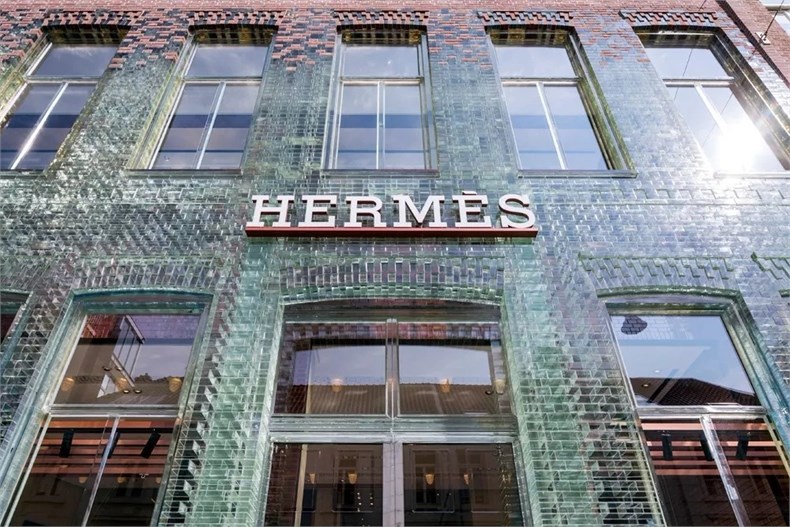

图/Image: Daria Scagliola & Stijn Brakkee
玻璃砖逐渐溶入传统的赤陶砖中
Glass replica dissolves into the traditional terracotta bricks
